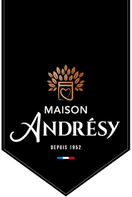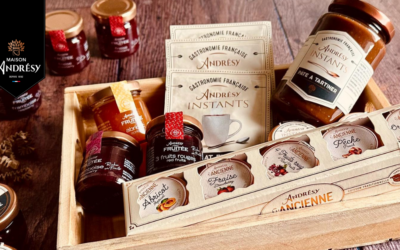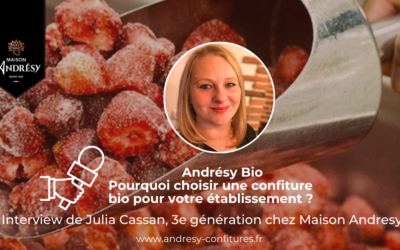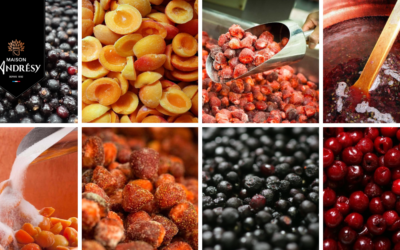Cooking in copper pans, tradition and modernity
When science corroborates French tradition
In the past, all “good housewives” cooked their jam productions in copper pans. This habit (along with the pan, perhaps) was passed down from mother to daughter.
With the development of the culinary arts, pastry-making and cooking techniques became more refined. Today we know all about the different cooking methods and utensils, and, more importantly, the reasons for using a particular product or a particular recipe for fruit jam production.
We already knew that copper was best for conducting and evenly distributing heat, but science has discovered that it also plays an important role in setting jam productions. Science has shown that, when jam is cooked in a copper pan, the pectin molecules in the fruit are released and capture the fruit and the water to form a natural binder.
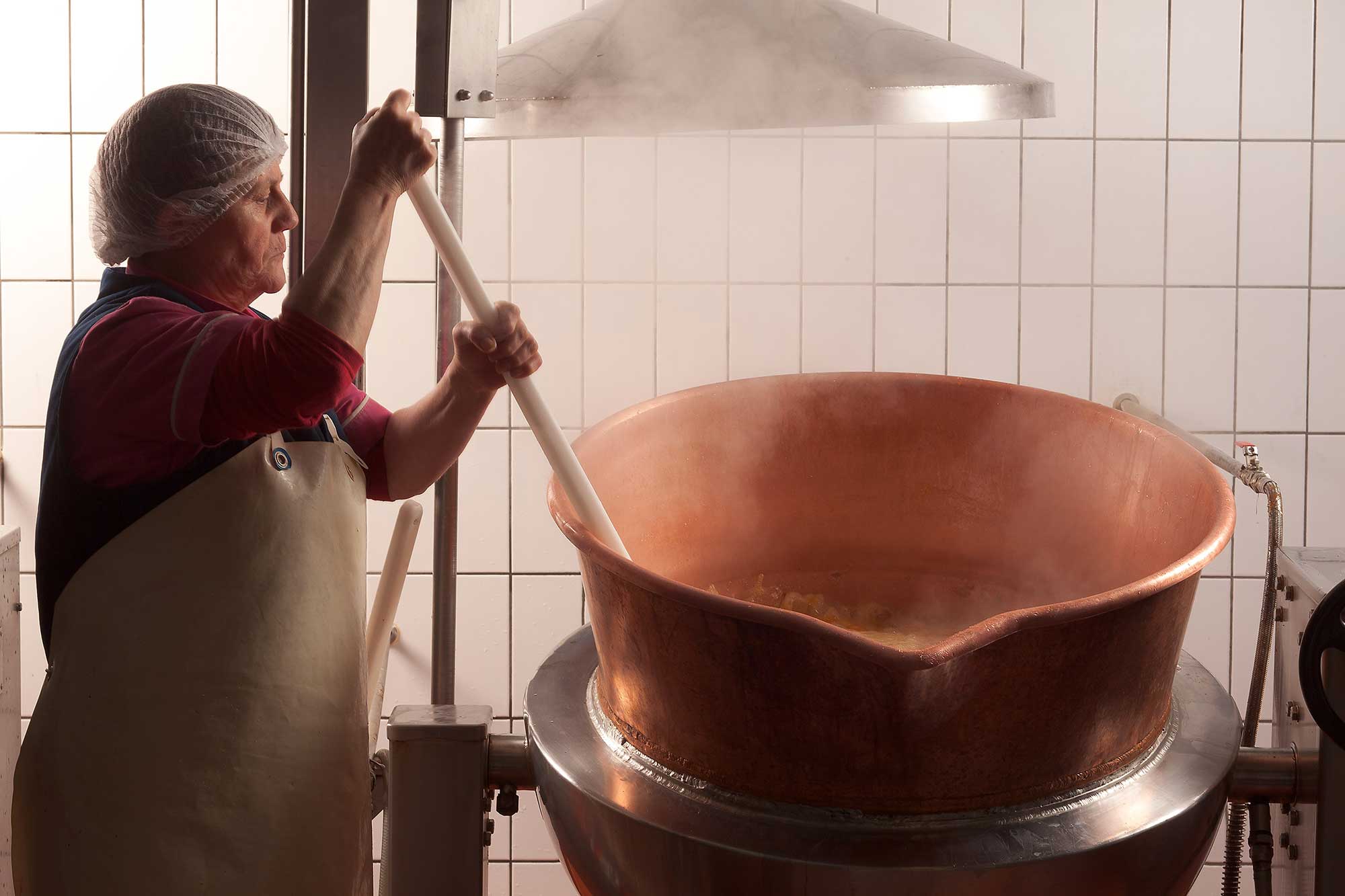
At Andrésy Confitures, the fruit is steam cooked in small quantities, in pans containing a maximum of 80 to 120 kg. This keeps the fruit from being crushed or broken. A person traditionally known as a “cooker” is assigned to managing and supervising each pan of fruit jam production. Based on the recipe book, the cooker selects the fruit and the correct proportion of cane sugar. In the small pans, the fruit and the sugar can be mixed by hand. This becomes too difficult for larger quantities, however, and a special tool is used. This mixer tool was designed according to specifications drawn up by Gérard Cassan, the real developer of Andrésy Confitures, with the copper pan manufacturers. To avoid damaging the ingredients, it reproduces the movements of an arm and hand.
Andrésy Confitures’ jam productions are made with the best fruit on the market, which are kept as whole as possible and treated with the utmost care! Cooking is therefore a delicate, precise process, timed to the nearest minute. Too long and the mixture caramelises and the fruit is damaged; not long enough and the mixture doesn’t set and the end result is not jam. Making premium-quality jam takes a combination of the know-how acquired over more than 60 years and the precise cooking time.
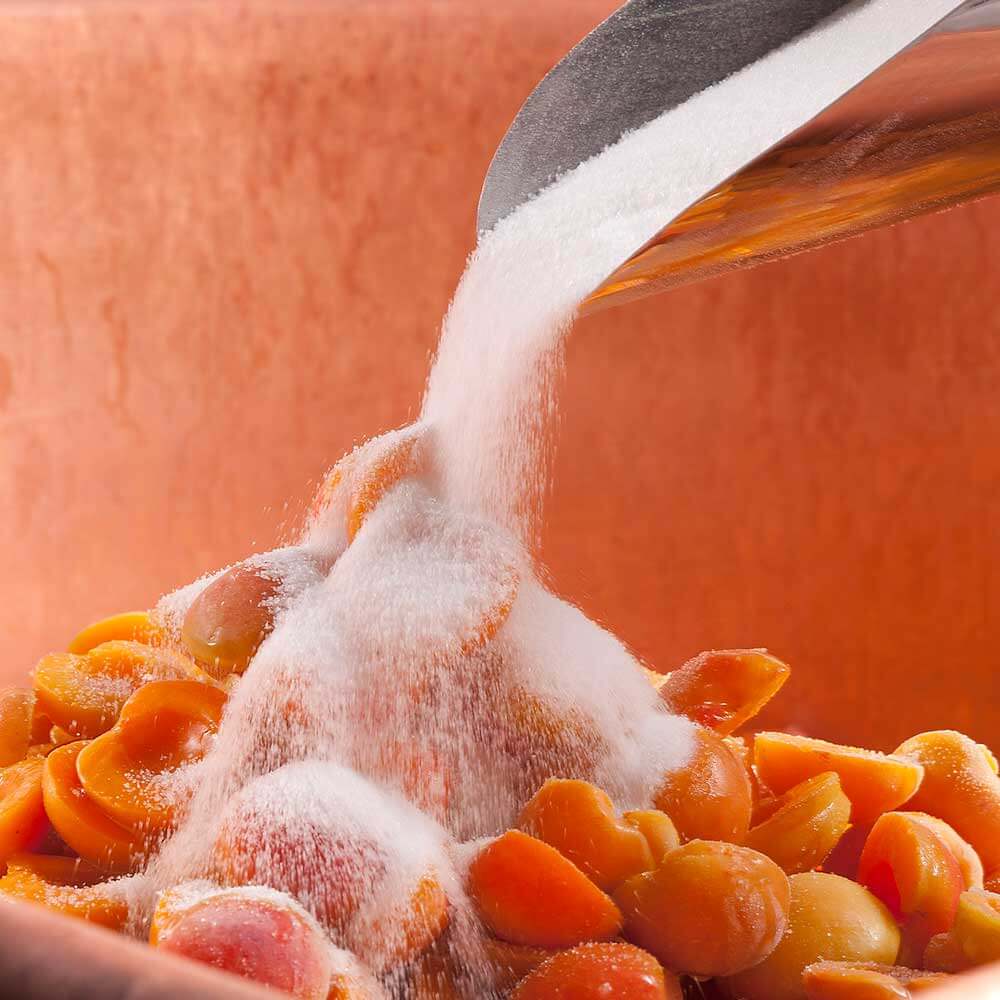
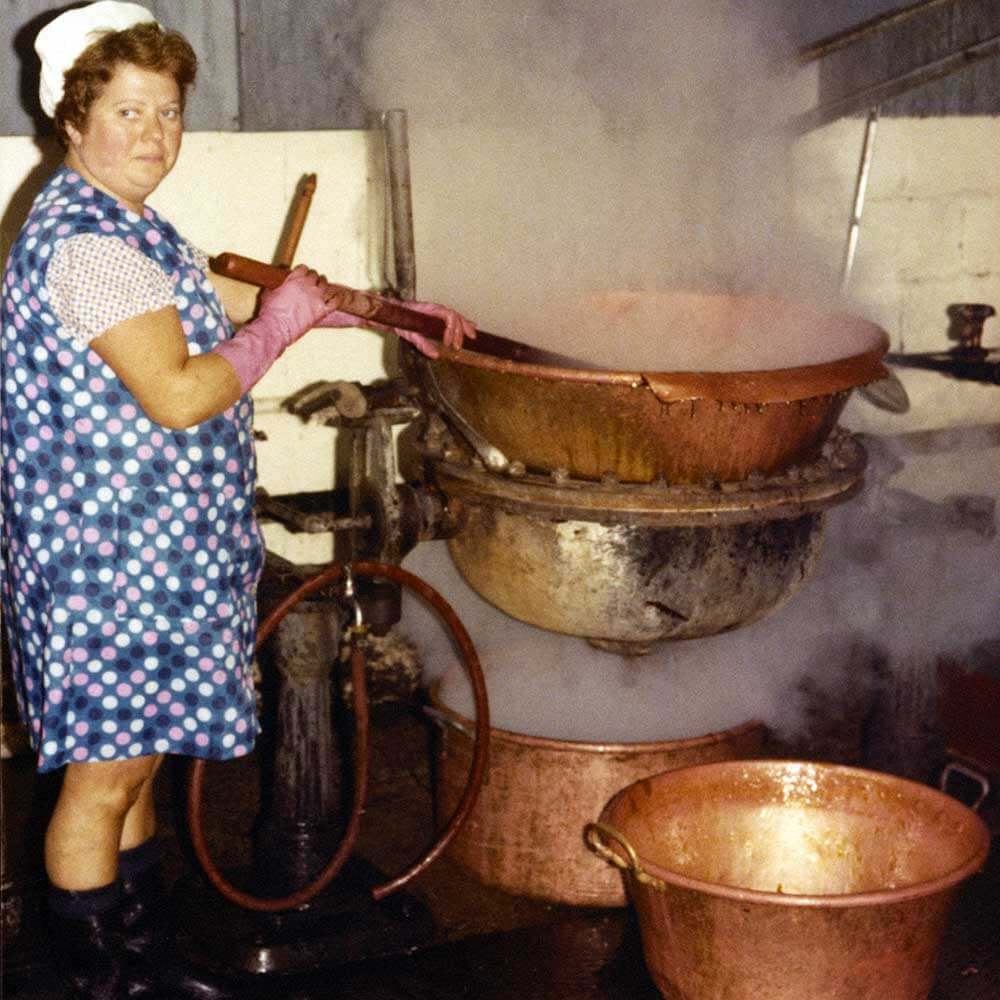
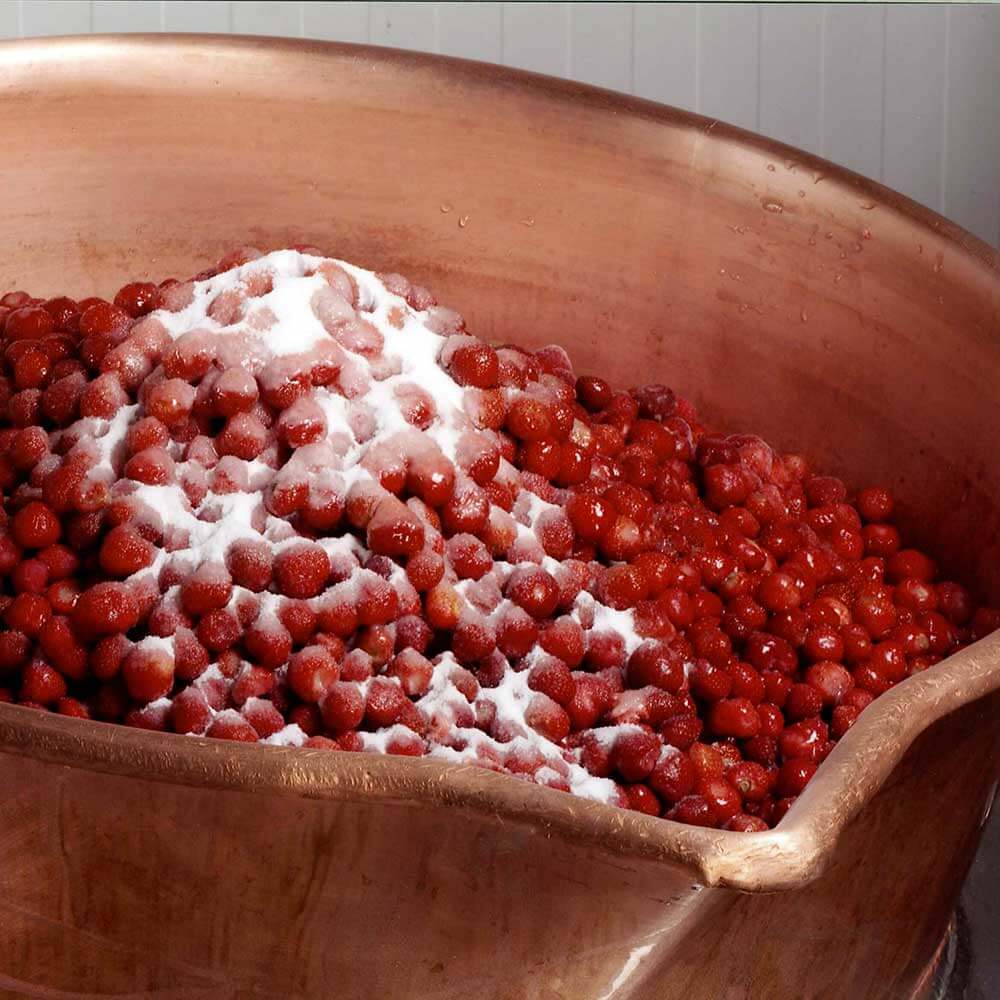
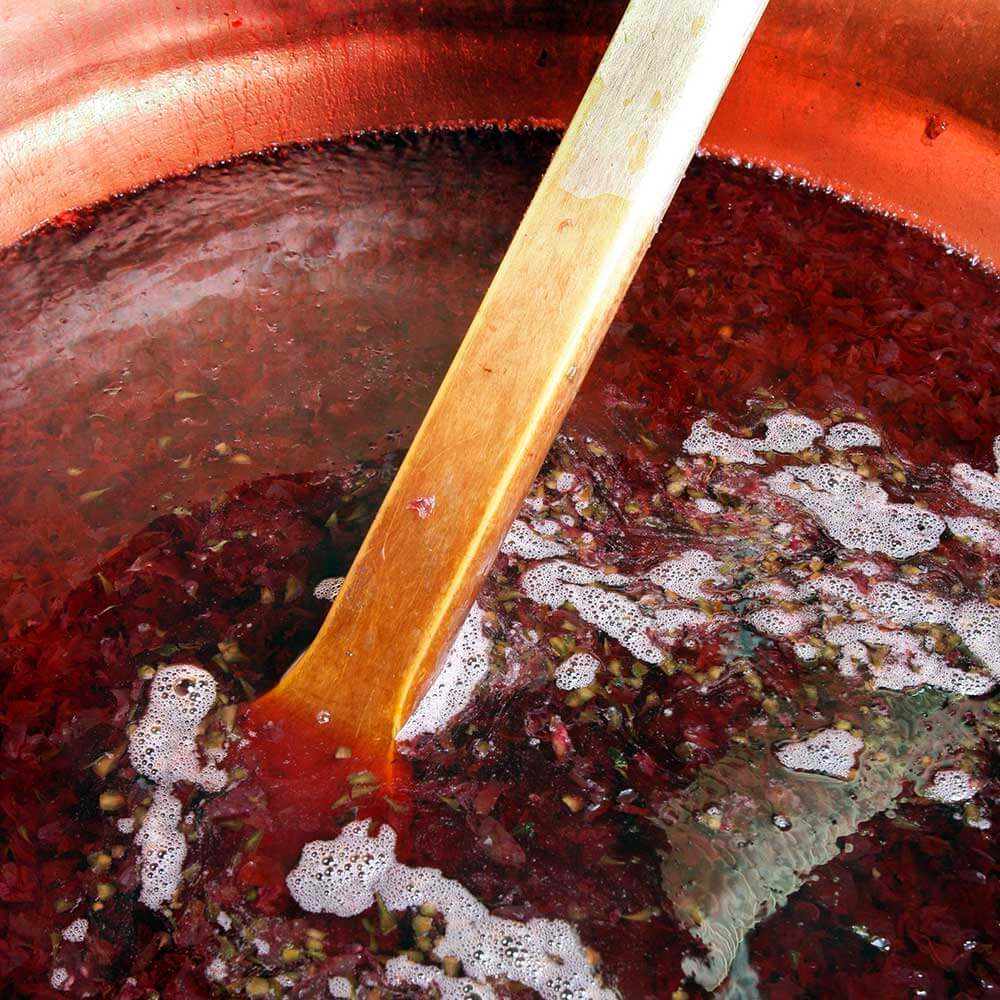
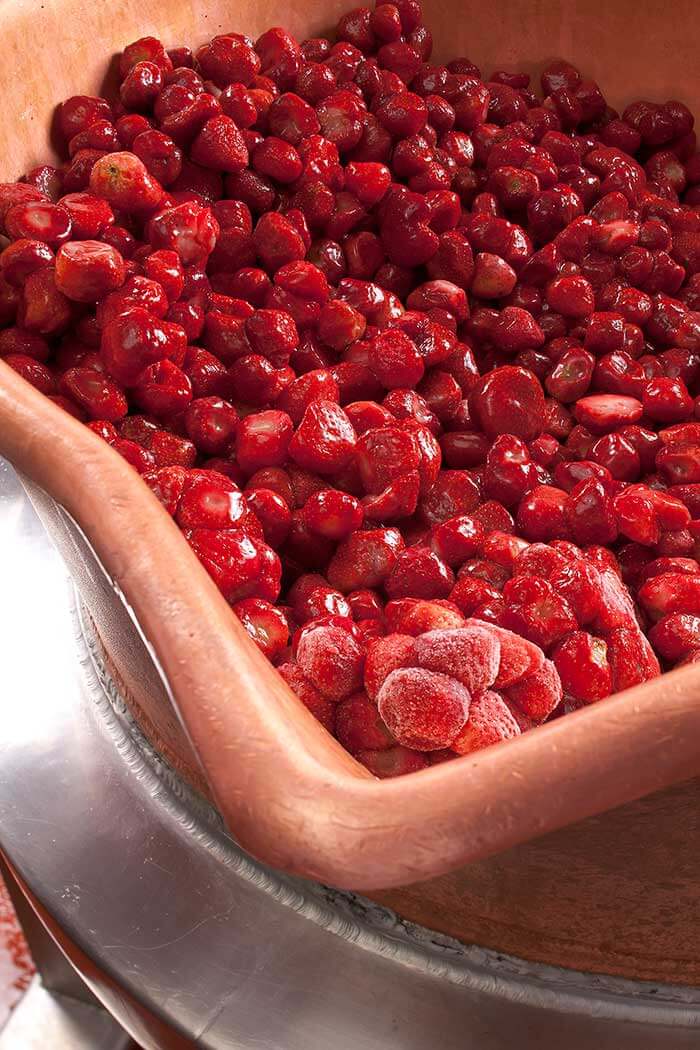
Passing on know-how
The cooker’s role clearly has nothing to do with guesswork. A cooker needs to know the fruit and where it comes from, the conditions in which it ripened and was picked, the ingredients, the flavours, the proportions, the right cooking methods and techniques… In short, this is all knowledge that no traditional training school can teach.
This is why Andrésy Confitures trains its “cookers” in-house during a course that lasts between 6 months and a year. The artisanal know-how required for fruit jam production is passed on by the Research & Development Department. The team is led by Julia Cassan, the founder’s granddaughter and a member of the third generation of jam makers at Andrésy Confitures.
Consistent quality in fruit jam production
Rigorously-selected fruit, a proven, meticulous cooking process and the company’s traditional know-how are our customers’ guarantee of enjoying year-round, consistent quality.
Coliseurs, what new features can you add to your gourmet gourmet baskets to keep them attractive?
 Accueil  23April 2024Parcels are highly appreciated by companies to honor their customers, by works councils for employees, and more generally by all those who receive them.Of all the different types of parcel, gourmet food baskets are an...
New: Andrésy Bio is now available! New recipes, new design… Why choose an organic jam for your establishment?
 Accueil  16April 2024Did you know that Maison Andrésy was one of the first jam makers to market an organic jam? Long before stores and consumers became aware of the benefits of organic produce, Maison Andrésy created...
Wondering which fruits are best for making jam ? Maison Andrésy, your expert in fruit sourcing, gives you its selection criteria!
 Accueil  6April 2024 In 2021, the Cassan family, who have run Maison Andrésy for 3 generations, decided that the motto of the family jam factory would be: "Sourcing the best of Nature to offer you the excellence of our know-how"....
